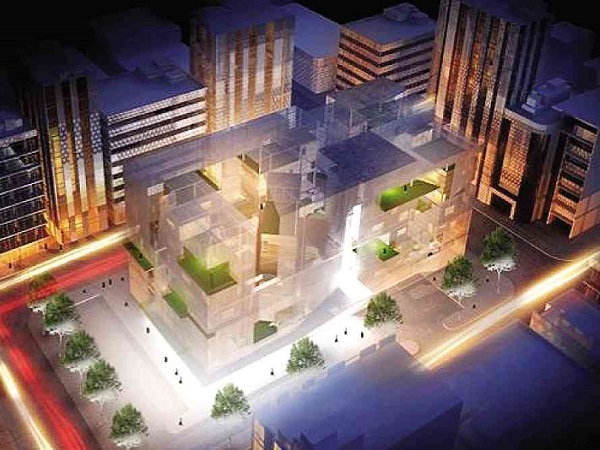Filipino students win at the architectural festival

ARCHITECTURE students Jon Medalla, Kathleen Canlas, Keshia Lim and Jorge Rocha got together during their school break, and after tossing ideas about, came up with the “Village in a Box”—a cluster of homes within a porous mass that allows light to filter in and air to circulate.
I was walking across one of the exhibition halls when I stumbled upon the final deliberation of the student charrette. Up on stage was the team of five architecture students from the University of San Carlos in Cebu, coming unto friendly scrutiny from the competition judges as they delivered their final presentation for the Student Division of this architectural design competition. This was early October in Singapore, Day 3 of the World Architecture Festival.
The design brief of the competition called for the creation of a community that can adapt to changing lifestyles and family demographics: “How can architecture respond to our changing modern society in which people are living longer than before and traditional family structures are beginning to change?” This related directly to the concerns of the elderly, but it also cited other needs such as spaces for movement and fitness, and the creation of a neighborly environment where social interaction promotes the emotional well-being of its residents. Moreover, there was a question of how housing can be made more flexible to accommodate families where at least three generations can coexist comfortably within one dwelling unit.
Link between disorders
In 2013, architecture students Jon Medalla, Kathleen Canlas, Keshia Lim and Jorge Rocha got together during their summer break, and after tossing ideas around, came up with the “Village in a Box.”
Their concept grew from the culture of the Filipino family, one which thrives on tight relationships and a deep concern for the elderly. Interestingly, their research highlighted the clear link between disorders like Alzheimer’s disease and social isolation, noting medical research that cited the Philippines as being one of the countries with the lowest rates of Alzheimer’s.
The team’s concept grew from the typically gridded cluster of suburban homes, rearranged to create informal shared spaces in between the dwelling units. Social spaces, so to speak. Then they went further to create roof gardens for private family spaces. These shared social spaces become seamlessly integrated into the building circulation, ensuring social interaction as one is forced to weave through these areas for access into each home. Here we have a community.
Neighborhood density
The density of each neighborhood can be increased by stacking platforms with another set of units, then taking the bottommost floor as an entry-level promenade. Upper platforms can be “punched out” to allow for vertical circulation between floors, and walls can be treated the same way, too. The cluster of homes becomes a porous mass that allows light to filter in and air to circulate, a deconstructed rectangle whose volumes have grown clearly out of the need of its inhabitants.
The entire “village” is then enclosed in a box made of perforated skin, creating a building envelope that blurs the lines between the exterior and the community spaces within. It defines without visually separating it from the outside world.
This “village” promotes the essence of communal living, nurturing the valuable characteristics of the Filipino family and the social interactions between the many generations that live within it.
Seven teams from around the world were shortlisted from the initial 50 entries to the student competition. The final elimination round in Singapore required each team to conform to other requirements that had to be incorporated into the initial design. They were given two days to make the improvements, prior to the final deliberation.
The previous years’ winners were from the United States and Europe, and from renowned universities such as Harvard and Massachusetts Institute of Technology. The University of the San Carlos team is the first Asian team to have been awarded this grand prize! Which further reinforces what everybody already knows—that we are undoubtedly Asia’s creative capital. Congratulations to Jon, Kathleen and Jorge. You make us proud!
Contact the author through [email protected] or through our Asuncion Berenguer Facebook account.














